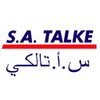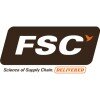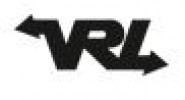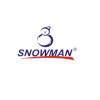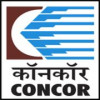Filter interviews by
S.A. TALKE Interview Questions and Answers
S.A. TALKE Interview Experiences
1 interview found
I applied via Recruitment Consulltant and was interviewed before Sep 2021. There were 3 interview rounds.

(3 Questions)
- Q1. Share your experience and introduce yourself
- Q2. Why do you want work with as
- Q3. Why do you left your current job
Wht the speed of Forklift inside and warehouse
Interview Preparation Tips
- Industrial Safety
- Risk Management
Follow company procedures to avoid damage.
Follow safety instructions to avoid injuries.
Top trending discussions






Interview questions from similar companies

Senior Engineer Mechanical Interview Questions & Answers
Adani Enterprisesposted on 24 Jan 2025
(2 Questions)
- Q1. What is your educational background?
- Q2. Can you provide details about your work experience?
(14 Questions)
- Q1. What is your experience with maintaining Key Performance Indicators (KPIs)?
- Q2. Can you provide details about your current job role?
- Q3. Can you provide details about your modification projects?
- Q4. What can you tell me about hydraulic systems?
- Q5. What can you tell me about electric furnaces?
- Q6. What is a hydraulic sleeping device?
- Q7. What is the work permit system, and why is it necessary?
- Q8. What are TBM and CBM, and can you provide examples of each?
- Q9. What are the different maintenance strategies that can be implemented?
- Q10. What strategies can be implemented to reduce breakdown time?
- Q11. What is condition monitoring and how is it implemented in industrial settings?
- Q12. What are the maintenance procedures for Electric Overhead Traveling (EOT) cranes?
- Q13. What is a confined space, and what precautions are necessary when working in such environments?
- Q14. Can you provide more details about your work experience?
Interview Preparation Tips
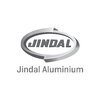
Junior Quality Engineer Interview Questions & Answers
Jindal Aluminiumposted on 3 Feb 2025
I was interviewed in Jan 2025.
My Name is Akash
My father name Shri Rajkishor
I am from Kushinagar ( Uttar Pradesh)
My data of birth 05/04/2005
My diploma course in mechanical engineering
My mobile no XXXXX
(3 Questions)
- Q1. What is diesel engine
- Ans.
A diesel engine is a type of internal combustion engine that uses compression ignition to burn fuel.
Diesel engines are commonly used in trucks, buses, and some cars.
They are more fuel efficient than gasoline engines.
Diesel engines have higher torque output compared to gasoline engines.
They do not have spark plugs, instead relying on compression to ignite the fuel.
Diesel engines are known for their durability and longev
- Q2. What is hydraulic system
- Ans.
A hydraulic system is a technology that uses liquid to transmit power.
Uses incompressible fluid to generate power
Consists of a pump, valves, cylinders, and hydraulic fluid
Commonly used in heavy machinery like excavators and cranes
- Q3. What is 4stock engine
- Ans.
A 4-stroke engine is an internal combustion engine that completes four separate strokes in the combustion cycle: intake, compression, power, and exhaust.
4-stroke engines are commonly used in automobiles, motorcycles, and small engines like lawnmowers.
They are more fuel-efficient and produce less pollution compared to 2-stroke engines.
Examples of vehicles with 4-stroke engines include cars, trucks, and SUVs.
(2 Questions)
- Q1. What is thermal power
- Ans.
Thermal power is the energy generated from heat, typically through the combustion of fossil fuels or nuclear reactions.
Thermal power plants use steam turbines to convert heat energy into mechanical energy
Common sources of thermal power include coal, natural gas, and nuclear fuel
Thermal power generation can contribute to air pollution and greenhouse gas emissions
- Q2. What is 4sto k engine
- Ans.
4-stroke engine is a type of internal combustion engine commonly used in vehicles and machinery.
4-stroke engines have four stages: intake, compression, power, and exhaust.
They are more fuel efficient and produce less emissions compared to 2-stroke engines.
Examples of vehicles with 4-stroke engines include cars, motorcycles, and trucks.
Interview Preparation Tips

Assistant Store Officer Interview Questions & Answers
Balasore Alloysposted on 26 Dec 2024
I applied via Recruitment Consulltant and was interviewed in Nov 2024. There was 1 interview round.
(2 Questions)
- Q1. What is your total work experience?
- Ans.
I have 5 years of work experience in retail management and inventory control.
5 years of experience in retail management and inventory control
Managed store operations, including inventory management, staff supervision, and customer service
Implemented strategies to improve store efficiency and increase sales
Trained new employees on store procedures and product knowledge
- Q2. What should one consider before applying for a job?
- Ans.
Before applying for a job, one should consider factors such as job requirements, company culture, career growth opportunities, and location.
Research the company to understand its values, culture, and reputation.
Evaluate the job requirements and match them with your skills and experience.
Consider the location of the job and whether it aligns with your lifestyle.
Assess the potential for career growth and development with...
Interview Preparation Tips
Prepare and Research
1. *Update your resume and LinkedIn profile*: Tailor your resume to the job you're applying for, and ensure your LinkedIn profile is professional and up-to-date.
2. *Research the company*: Understand the company's mission, values, and culture to show your interest and enthusiasm.
3. *Practice your responses*: Prepare answers to common interview questions, such as "Why do you want to work for this company?" or "What are your strengths and weaknesses?"
Networking and Job Search Strategies
1. *Network and make connections*: Attend job fairs, industry events, and networking sessions to meet people in your field.
2. *Utilize job search platforms*: Use popular job search websites, such as LinkedIn, Indeed, or Glassdoor, to search for job openings.
3. *Leverage social media*: Use social media platforms, like Twitter or Facebook, to connect with companies and recruiters.
4. *Consider working with a recruiter*: Recruiters often have access to job openings that are not advertised publicly.
Interview and Follow-up
1. *Prepare for common interview questions*: Research the company and practice your responses to common interview questions.
2. *Show enthusiasm and interest*: Demonstrate your passion for the company and the role during the interview.
3. *Follow up after the interview*: Send a thank-you note or email to the interviewer to express your gratitude and interest in the position.
4. *Be patient and persistent*: It may take time to land a job, so stay positive and keep applying.
Skill Development and Personal Branding
1. *Develop in-demand skills*: Invest in courses or training programs to develop skills that are in high demand in your industry.
2. *Create a personal brand*: Establish a professional online presence, including a website or blog, to showcase your skills and experience.
3. *Showcase your achievements*: Highlight your achievements and accomplishments

Quality Control Officer Interview Questions & Answers
Hindalco Industriesposted on 27 Jan 2025
(3 Questions)
- Q1. Basic Chemistry? Water Analysis.?
- Q2. Information about ICP-OES? Troubleshooting of ICP OES?
- Ans.
ICP-OES stands for Inductively Coupled Plasma - Optical Emission Spectroscopy, used for elemental analysis in various industries.
ICP-OES is a technique used for elemental analysis in various industries such as environmental, pharmaceutical, and food testing.
It works by ionizing the sample in an inductively coupled plasma and then measuring the emitted light at specific wavelengths.
Troubleshooting of ICP-OES involves ch...
- Q3. Type of titration?
- Ans.
The type of titration refers to the method used to determine the concentration of a substance in a solution by reacting it with a known volume and concentration of another substance.
There are different types of titrations such as acid-base titrations, redox titrations, and complexometric titrations.
In acid-base titrations, the pH of the solution is monitored to determine the endpoint of the reaction.
Redox titrations in...

Substation feeder work and electrical maintenance Interview Questions & Answers
Coal Indiaposted on 27 Dec 2024
(5 Questions)
- Q1. What is substation use equipment
- Ans.
Substation use equipment refers to the various devices and tools used in a substation for power distribution and maintenance.
Substation transformers
Circuit breakers
Disconnect switches
Voltage regulators
Capacitor banks
Protective relays
- Q2. What is electricity
- Ans.
Electricity is the flow of electric charge through a conductor.
Electricity is the flow of electrons through a conductor
It is a form of energy that powers electrical devices
Electricity can be generated from various sources such as coal, wind, solar, and hydro
It is measured in units of volts, amps, and watts
- Q3. What is induction motor and functions
- Ans.
An induction motor is a type of AC motor that works on the principle of electromagnetic induction to convert electrical energy into mechanical energy.
Induction motors are commonly used in various industrial applications due to their simplicity, reliability, and low cost.
They consist of a stator (stationary part) and a rotor (rotating part) where the rotor is not connected to an external power source.
When an alternating...
- Q4. What is generator and functions
- Ans.
A generator is a device that converts mechanical energy into electrical energy. It functions by rotating a coil of wire within a magnetic field to produce electricity.
Generates electricity by converting mechanical energy into electrical energy
Consists of a coil of wire rotating within a magnetic field
Used in power plants, backup generators, and portable generators
- Q5. What is Transformers this function
- Ans.
Transformers function to change voltage levels in electrical systems.
Transformers increase or decrease voltage levels in electrical systems
Step-up transformers increase voltage for long-distance transmission
Step-down transformers decrease voltage for distribution to homes and businesses
Transformers help maintain power quality and efficiency in electrical grids

Senior Electrical Technician Interview Questions & Answers
Toyota Tsushoposted on 24 Dec 2024
I applied via Newspaper Ad
(2 Questions)
- Q1. Electrical maintenance operation shift handling
- Q2. All electrical technical only detail
(1 Question)
- Q1. Electrical maintenance shift handling
Interview Preparation Tips

I applied via Naukri.com and was interviewed in Dec 2024. There were 2 interview rounds.
(2 Questions)
- Q1. Can you describe your work experience?
- Q2. What is your area of expertise?
(1 Question)
- Q1. Can you provide details about your past employment experiences?
Interview Preparation Tips

Security Manager Interview Questions & Answers
Ashapura Group Of Industriesposted on 30 Dec 2024
I applied via LinkedIn and was interviewed in Nov 2024. There were 4 interview rounds.
Theft case investigation
(2 Questions)
- Q1. How to control theft stolen cases
- Ans.
Implementing security measures, conducting regular audits, training staff, utilizing technology
Implementing security measures such as installing surveillance cameras, alarms, and access control systems
Conducting regular audits to identify any vulnerabilities or gaps in security
Training staff on theft prevention techniques and the importance of reporting suspicious behavior
Utilizing technology such as RFID tags or GPS t...
- Q2. How to implement security policy, procedure n protocol.
- Ans.
Implementing security policy, procedures, and protocols involves creating guidelines, rules, and processes to protect assets and mitigate risks.
Develop a comprehensive security policy that outlines the organization's security goals, objectives, and responsibilities.
Establish procedures for implementing the security policy, including access control, incident response, and security awareness training.
Define protocols for...
(2 Questions)
- Q1. How is your drafting and communication skill
- Ans.
My drafting and communication skills are strong, with experience in writing detailed security reports and effectively communicating with team members.
Proficient in drafting detailed security reports
Skilled in effectively communicating with team members
Experience in creating clear and concise security policies and procedures
Ability to convey complex security information in a clear and understandable manner
- Q2. Are you able make one theft investigation report
- Ans.
Yes, I am able to make theft investigation reports.
Gather all relevant information and evidence related to the theft
Interview witnesses and suspects to gather additional information
Analyze the collected data to identify patterns and potential suspects
Document findings, conclusions, and recommendations in a detailed report
Discussed how to work n CTC expectation
Interview Preparation Tips

Junior Technician Interview Questions & Answers
TRL Krosaki Refractoriesposted on 30 Oct 2024
(9 Questions)
- Q1. What is the unit of resistance?
- Ans.
The unit of resistance is ohm (Ω).
The unit of resistance is measured in ohms (Ω).
Resistance is denoted by the symbol 'R' in equations.
One ohm is equal to one volt per ampere (1 Ω = 1 V/A).
- Q2. What is the meaning of current?
- Ans.
Current is the flow of electric charge in a circuit.
Current is the rate of flow of electric charge in a circuit.
It is measured in Amperes (A).
Current flows from positive to negative terminal in a circuit.
There are two types of current - AC (Alternating Current) and DC (Direct Current).
- Q3. What is magnet?
- Ans.
A magnet is an object that produces a magnetic field and attracts certain materials like iron.
A magnet has two poles - north and south.
Opposite poles attract each other while like poles repel.
Magnets can be natural (lodestone) or man-made (permanent magnets).
- Q4. What is the working principle of transformer?
- Ans.
Transformer works on the principle of electromagnetic induction to transfer electrical energy between two or more circuits.
Transformers have two coils of wire, known as primary and secondary coils.
When an alternating current flows through the primary coil, it creates a changing magnetic field.
This changing magnetic field induces a voltage in the secondary coil, transferring electrical energy.
The ratio of the number of ...
- Q5. Value of Indian frequency?
- Ans.
The value of Indian frequency is 50 Hz.
The standard frequency used in India for electrical power distribution is 50 Hz.
This frequency is used for both residential and industrial purposes.
It is important for ensuring compatibility of electrical equipment and appliances.
In contrast, countries like the United States use a frequency of 60 Hz.
- Q6. What is the unit of current?
- Ans.
The unit of current is Ampere (A).
The unit of current is Ampere (A)
It is named after the French physicist Andre-Marie Ampere
Current is the flow of electric charge in a circuit
- Q7. What is the meaning magnetic field?
- Ans.
A magnetic field is a region around a magnetic material or a moving electric charge within which the force of magnetism acts.
A magnetic field is produced by moving electric charges or magnetic materials.
It exerts a force on other moving charges and magnetic materials within its vicinity.
The strength and direction of a magnetic field can be represented by magnetic field lines.
Examples include the Earth's magnetic field
- Q8. Law's of resistance?
- Ans.
The laws of resistance describe how the resistance of a material is affected by factors such as length, cross-sectional area, and temperature.
Resistance is directly proportional to the length of the material - longer materials have higher resistance.
Resistance is inversely proportional to the cross-sectional area of the material - larger cross-sectional areas have lower resistance.
Resistance increases with temperature ...
- Q9. Relationship between current, voltage and resistance?
- Ans.
The relationship between current, voltage, and resistance is described by Ohm's Law.
Ohm's Law states that the current flowing through a conductor is directly proportional to the voltage applied across it and inversely proportional to the resistance of the conductor.
Mathematically, Ohm's Law is expressed as I = V/R, where I is the current in Amperes, V is the voltage in Volts, and R is the resistance in Ohms.
This relati...
S.A. TALKE Interview FAQs
Tell us how to improve this page.
Interview Questions for Popular Designations
Interview Questions from Similar Companies
S.A. TALKE Reviews and Ratings
based on 38 reviews
Rating in categories
|
Engineering Specialist
6
salaries
| ₹7.2 L/yr - ₹8.4 L/yr |
|
Maintenance Planner
6
salaries
| ₹6 L/yr - ₹12.5 L/yr |
|
Forklift Operator
4
salaries
| ₹0.8 L/yr - ₹4.8 L/yr |
|
Planning Engineer
3
salaries
| ₹6 L/yr - ₹10.8 L/yr |
|
Maintenance Planning Engineer
3
salaries
| ₹12 L/yr - ₹12 L/yr |

GATI-KWE
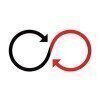
Allcargo Logistics

Blue Dart Express

Gateway Distriparks
- Home >
- Interviews >
- S.A. TALKE Interview Questions
